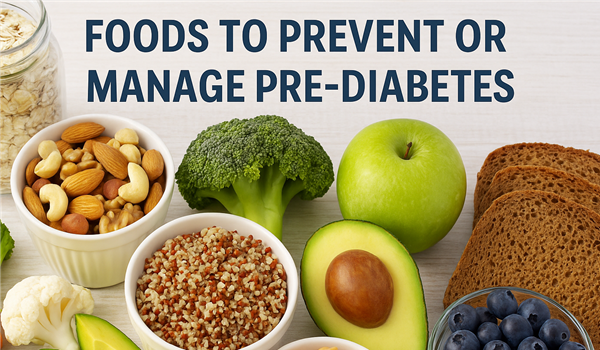Prediabetes diet advice blood sugar

Patient Information Leaflet: Foods to Prevent or Manage Pre-Diabetes
Kensington Medical Centre – Belfast
⸻
What Is Pre-Diabetes?
Pre-diabetes means your blood sugar levels are higher than normal but not yet high enough to be diagnosed as type 2 diabetes. It’s a warning sign — but the good news is that healthy eating and lifestyle changes can help prevent or delay diabetes.
⸻
Goals of a Pre-Diabetes Diet
• Keep blood sugar levels steady
• Maintain a healthy weight
• Improve how your body uses insulin
• Support heart health
⸻
Best Foods to Help Prevent or Manage Pre-Diabetes
1. Wholegrains
High in fibre and release sugar slowly into the blood.
Examples: oats, brown rice, wholegrain bread and pasta, barley
2. Vegetables
Low in calories and rich in vitamins and fibre.
Examples: leafy greens, broccoli, peppers, carrots, cauliflower (aim for 2–3 cups per day)
3. Legumes
Rich in fibre and protein, with a low glycaemic index.
Examples: lentils, chickpeas, kidney beans, black beans
4. Fruits (in moderation)
Choose whole fruits over juice to keep fibre.
Examples: apples, pears, berries, oranges (limit to 1–2 servings daily)
5. Lean Proteins
Help you feel full and reduce blood sugar spikes.
Examples: chicken, turkey, eggs, tofu, low-fat yoghurt, fish
6. Healthy Fats
Support heart health without raising blood sugar.
Examples: nuts, seeds, olive oil, avocado, oily fish
7. Dairy Alternatives or Low-Fat Dairy
Choose unsweetened or no-added-sugar options.
Examples: skimmed milk, low-fat yoghurt, fortified plant-based milks
⸻
Foods to Limit or Avoid
• Sugary snacks and drinks – including fizzy drinks, sweets, cakes
• White bread, rice, and pasta – choose wholegrain versions instead
• Highly processed foods – often high in sugar, fat, and salt
• Fried foods and takeaways – high in calories and unhealthy fats
• Alcohol – keep within 14 units per week, with several alcohol-free days
⸻
Helpful Eating Tips
• Eat regular meals to avoid blood sugar dips and spikes
• Fill half your plate with non-starchy vegetables
• Watch portion sizes – use smaller plates if needed
• Drink plenty of water – 6–8 glasses a day
• Plan meals ahead to avoid processed or fast food
• Read food labels to check for added sugars and hidden carbs
⸻
When to See a Doctor
Speak to your GP if you:
• Have been told you have pre-diabetes or are at risk of diabetes
• Want support with weight loss or healthy eating
• Need help creating a meal plan or understanding food labels
• Notice symptoms like increased thirst, tiredness, or frequent urination
Your doctor may refer you to a dietitian or a Diabetes Prevention Programme.
⸻
For more information, visit https://www.nhs.uk/conditions/diabetes/
This leaflet is for general information only. Please speak to your healthcare provider for advice specific to you.
Medical Disclaimer
The dietary advice and information provided in this leaflet are for general guidance and educational purposes only. They are not intended to replace personalised advice, diagnosis, or treatment from a qualified healthcare professional.
If you have a medical condition, are taking medication, are pregnant or breastfeeding, or have specific dietary needs or food allergies, you should consult your GP, dietitian, or another healthcare provider before making significant changes to your diet.
Following general dietary recommendations without proper medical supervision may not be suitable for everyone and could result in unintended health effects. Always seek individualised medical advice for your personal health circumstances.
Page created: 01 June 2025